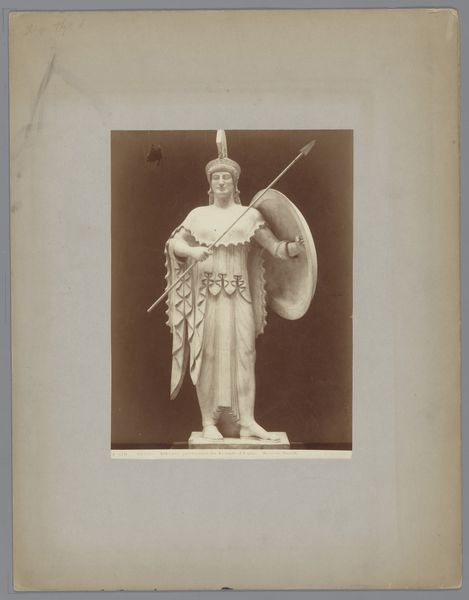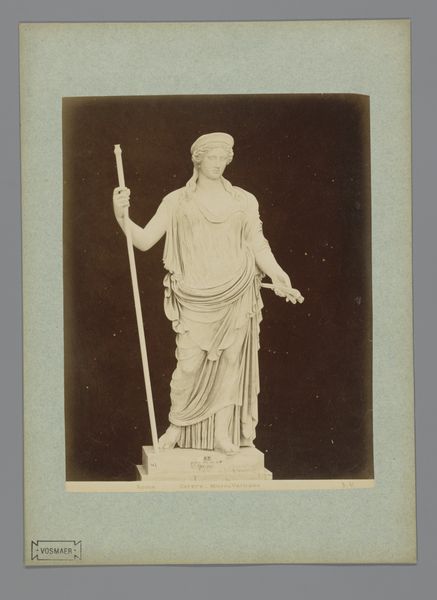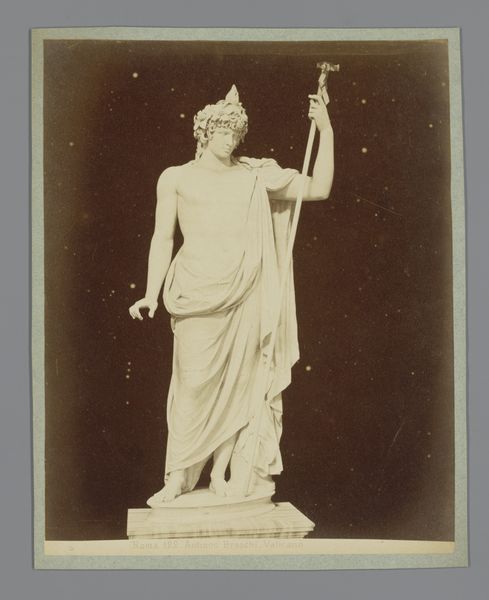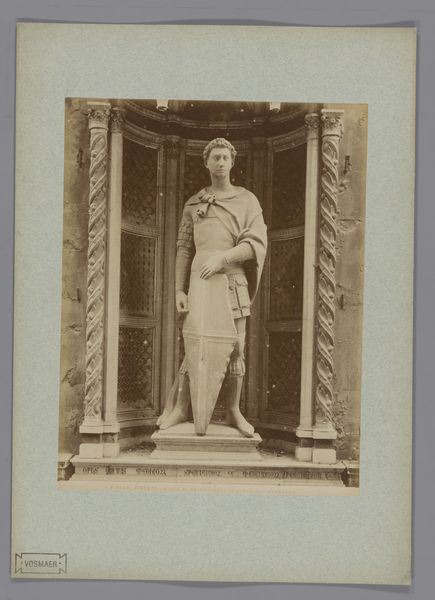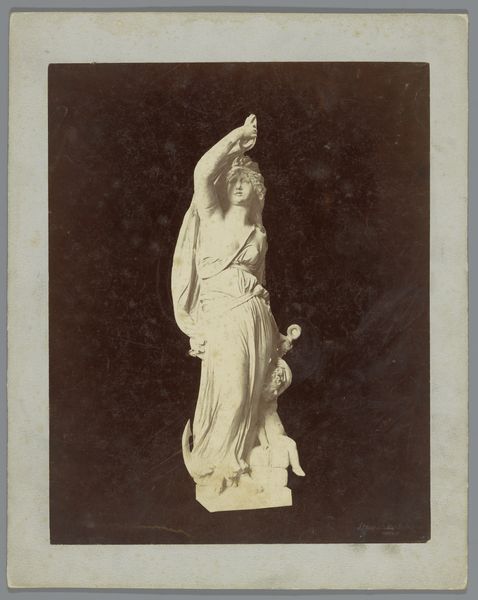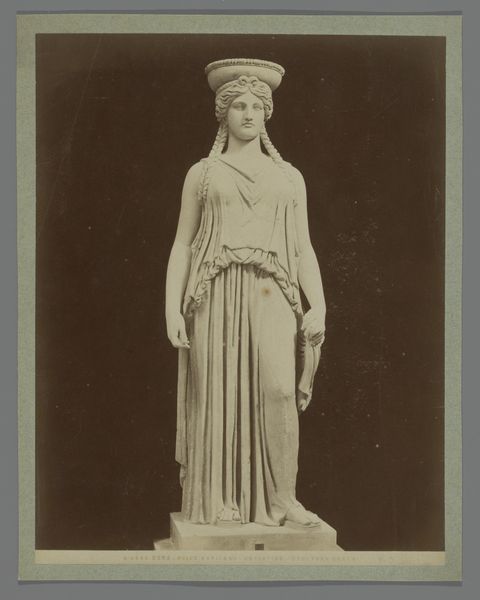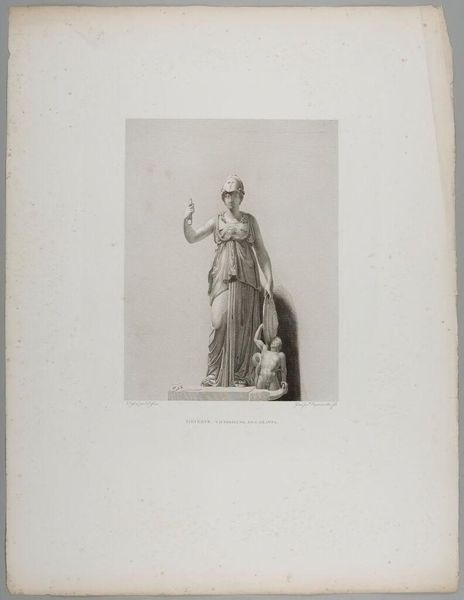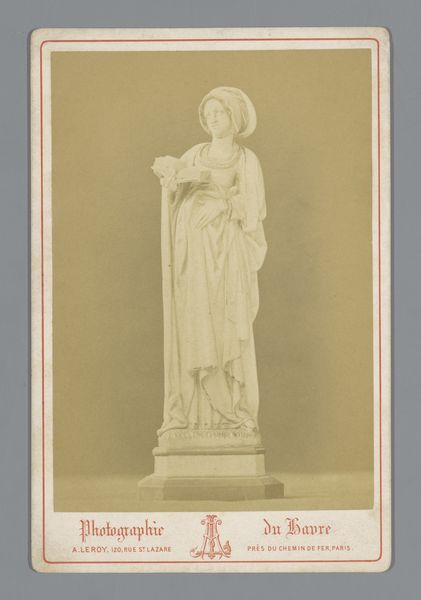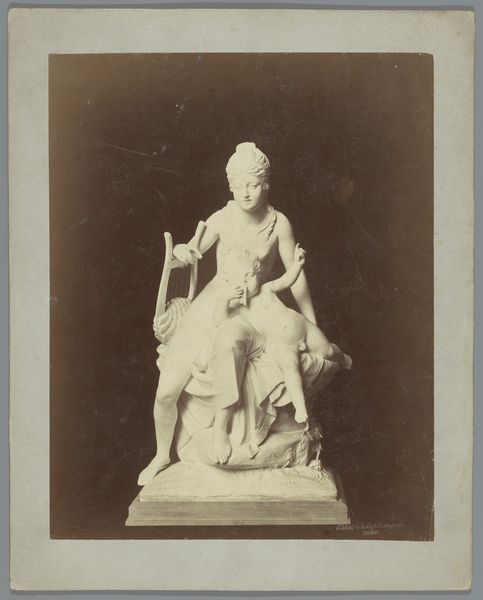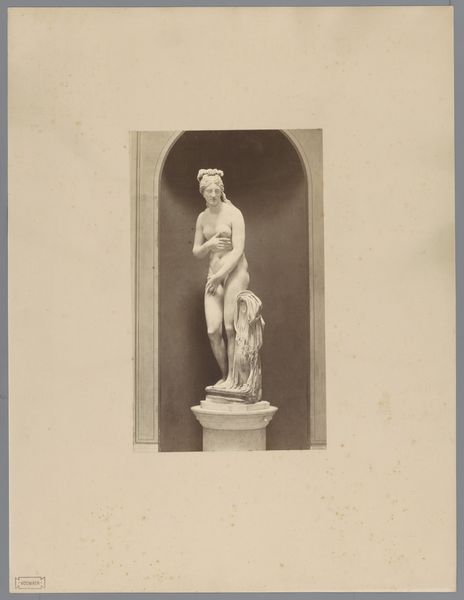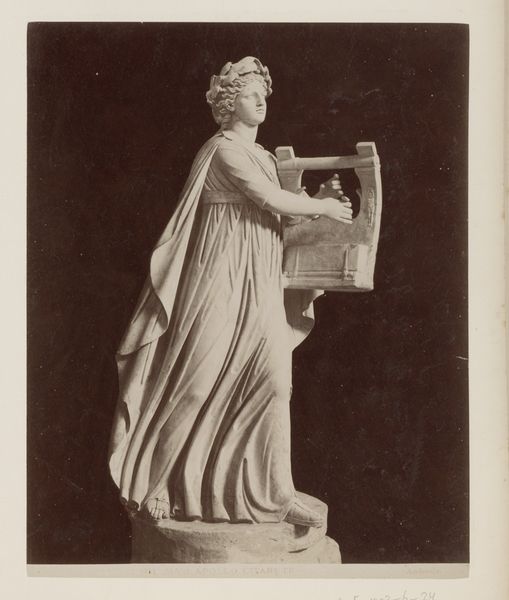
photography, sculpture, gelatin-silver-print
#
portrait
#
classical-realism
#
photography
#
ancient-mediterranean
#
sculpture
#
gelatin-silver-print
#
history-painting
Dimensions: height 329 mm, width 216 mm
Copyright: Rijks Museum: Open Domain
Editor: So, here we have an image titled 'Sculptuur van Juno, Museo Vaticano,' dating back to sometime between 1850 and 1870. It's a gelatin-silver print photograph, strangely enough, of a sculpture, credited to Libreria Spithöver. The mood is really serene. The stark lighting gives her this powerful, yet detached presence. How do you read this photograph, beyond just a picture of a statue? Curator: It’s interesting how the photograph itself becomes an object, almost mimicking the statue it depicts. In the 19th century, photographs of sculptures like this served a crucial role. Consider how this image circulated – perhaps as a souvenir, or an educational tool. The Spithöver bookstore, which produced it, catered to tourists and scholars in Rome. Does that shift your thinking about its purpose? Editor: It does. It's not just about aesthetic appreciation; it’s about dissemination and almost a branding of classical art. I wonder about the choice to photograph it. Why this particular sculpture? Curator: Juno, the Roman equivalent of Hera, was a potent symbol of power, marriage, and the state. Photographing her served a cultural and even political function. These images played a key role in constructing and perpetuating ideas about Western civilization, associating it with the grandeur of Rome. Notice the dark background. Does that not almost stage the figure, as though it is presenting a myth for public consumption? Editor: It really does feel curated, doesn't it? I guess I hadn't considered how much these photographs actively shaped how people understood classical art at the time. The statue becomes an emblem, made accessible and marketable through photography. Curator: Precisely. We must think critically about the social and political forces at play. The photograph is not simply a neutral record but an active participant in shaping cultural narratives. Editor: I'll definitely look at these older photographs differently now, keeping in mind their cultural purpose rather than just as art objects. Curator: Indeed, everything, from the setting to circulation, serves a critical purpose, worthy of historical analysis.
Comments
No comments
Be the first to comment and join the conversation on the ultimate creative platform.
